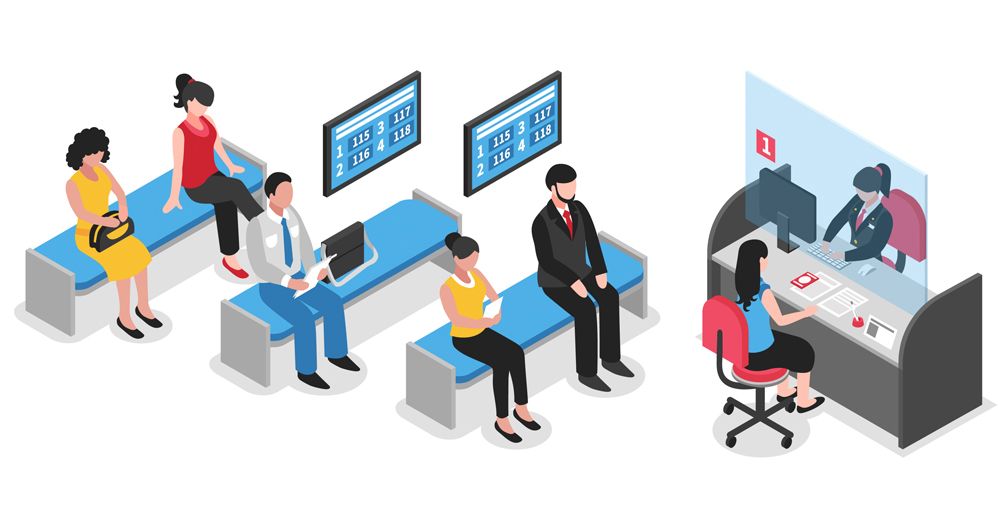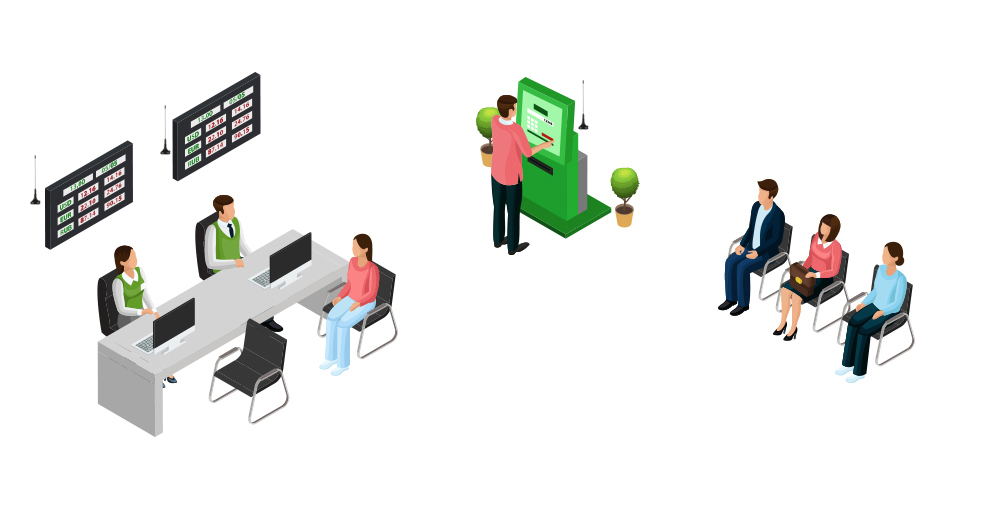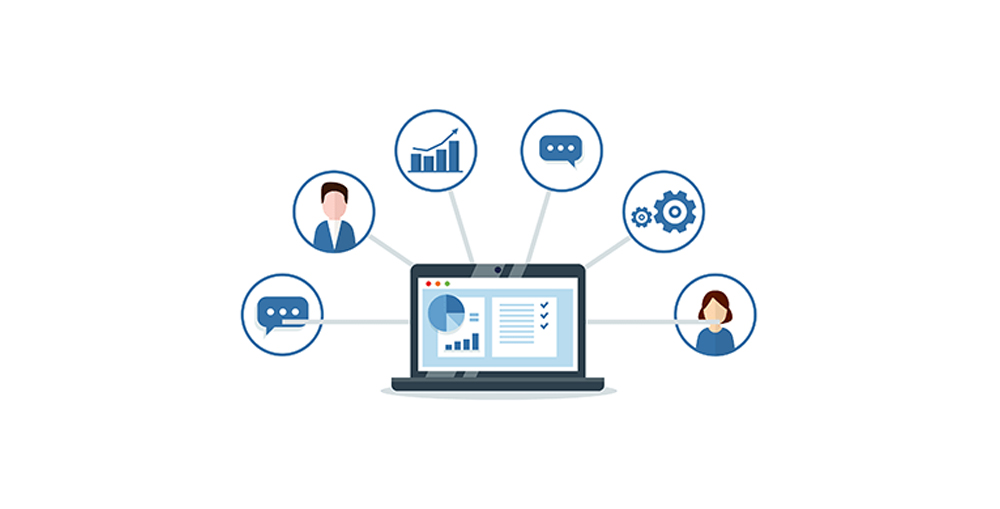The technology have completely revolutionized the ways how businesses and customers are interacting. A queue management system is a sophisticated tool build with smart algorithms and analytical tools which help businesses monitor and improve customers’ queuing experience while improving efficiency and several business processes. A modern queue management system is a combination of sophisticated software and various hardware components which all works in harmony to streamline customer flow.
In customer facing environments, crowd formation and long wait time are the two most critical pain point for the customers. Implementing a modern queue management system not only facilitate customers, but it also help service staff and management and improve the entire operation of the business/branch. According to studies a customer can only wait for around 8 to 9 minutes, any time longer than that will add to their frustration and lengthy waiting time are one of the major cause of customer churn.
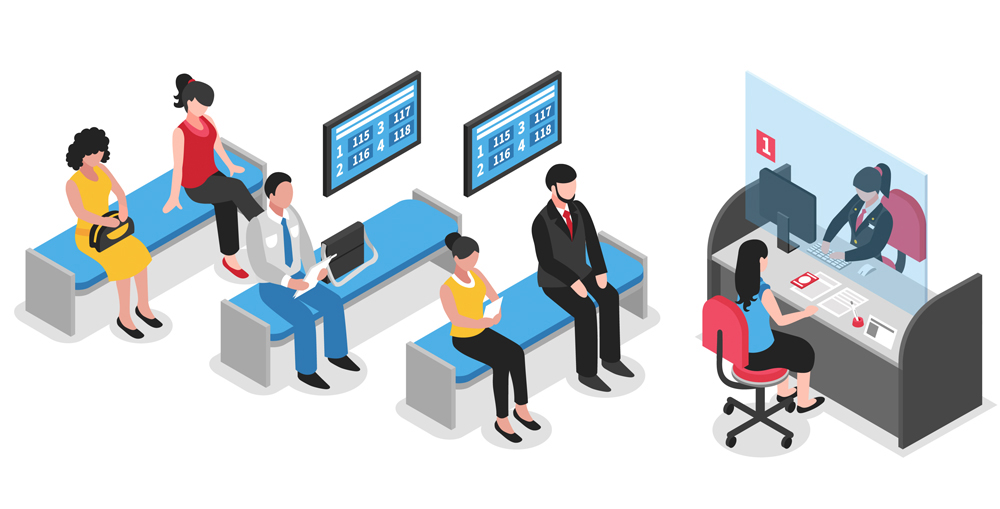
In today’s fast-paced world, no customer wants to wait in long queues, the customers want quick and quality service. If the customer feel they are inadequately served, it will harm your brand reputation and the customers are most likely to switch to other businesses. In this blog we will discuss how you can prevent that by implementing a modern queue management system how your business can easily achieve their goals while maintaining greater service quality, operational performance and higher customer satisfaction.
How Modern Queue Management System Works?
A modern queue management system is more than a humble line management tool, in fact it is based on AI (artificial intelligence) based powerful software solution and smart data-driven analytical data management tool which not only help improving customer flow but it also helps management in optimizing the entire service delivery. A modern queue management system comes with a wide range of features which help management with digitalization, automation and business process optimization.
Where a queue management system improve customer experience it also greatly improve service quality and staff performance. Features like virtual queuing, smart automations, real-time monitoring and interactive tools for customers and service agents, businesses can greatly enhance the overall efficiency and performance which help them retain customers. The modern queue management systems can also be integrated with other third-party systems and databases. All these modern features makes a modern queue management system an ultimate branch optimization tool.
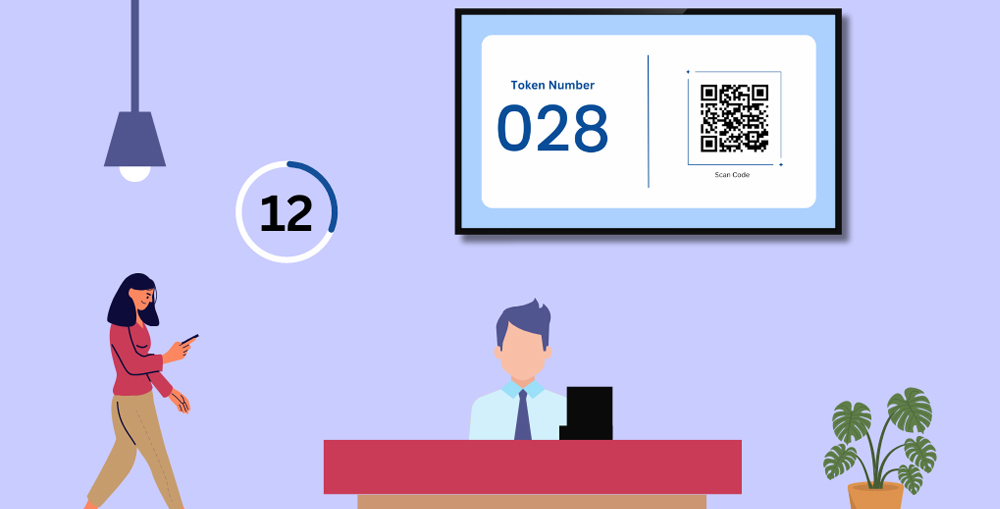
What are the Key Advantages of a Modern Queue Management System?
Unlike traditional queue management systems a modern queue management system is a very capable tool, it can offer great many benefits, here are a few key advantages of a modern queue management system:
- Enhanced Customer Experience: For any business customer experience is one of the most important metric to improve. In fact the entire business growth depends on their success in customer experience. A modern queue management system greatly reduce customer wait time and help businesses improve service quality. A better well-managed and organized customer journey ensures a better experience. Enhanced customer experience help attaining customer loyalty and support business growth.
- Enhanced Staff Efficiency: For any business it is absolutely essential to be able to leverage the full potential of their staff. A modern queue management system helps businesses improve staff efficiency by lifting up the unnecessary work load via digitalization and automation. This help staff focus on their primary and more productive tasks and consequently enhance their efficiency.
- Business Intelligence and Insights: A modern queue management system help businesses collect valuable business intelligence data on customer flow, customer journey, interaction and staff performance along with high quality statistical and analytical data. Businesses can get highly accurate and deeper insight from this data and based their decision upon data which help them to make improvements and business processes.
- Third-party System Integration: A modern queue management system has ability to integrate with third-party systems, databases, and central information center which help businesses incorporate innovative features. The integration can be very helpful for enhancing customer experience and it also help improving the overall performance and efficiency of customer service process.
There are several advantages of a modern queue management system. Businesses can also have a customized queue management system which can be very helpful to fulfil their unique and exclusive business needs.
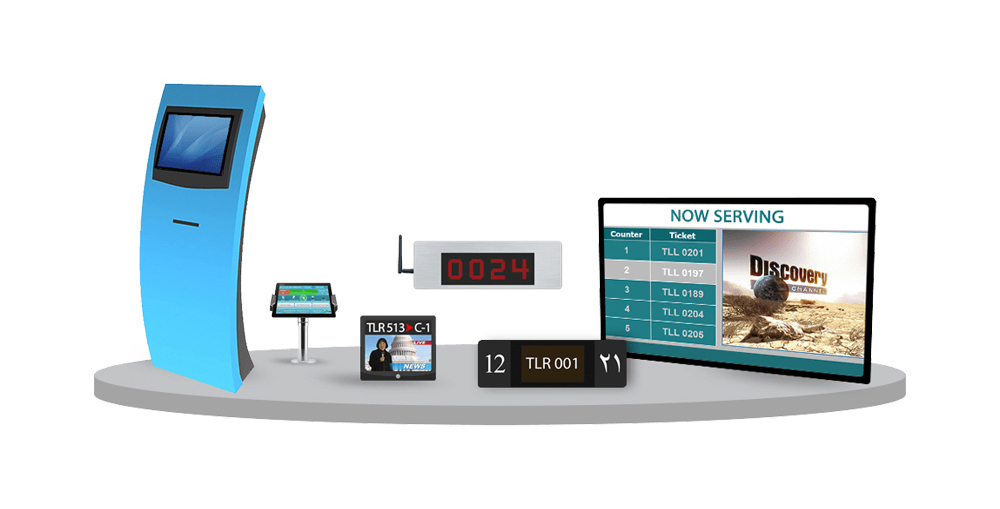
What are the Key Features of a Modern Queue Management System?
A modern queue management system is equipped with cutting-edge technology and modern features which makes it more effective and impactful.
Here are a few key features of a modern queue management system:
- Virtual Queuing: The virtual queuing have completely revolutionized the customer experience and customer flow management process. The virtual queuing enable customers to join remotely for virtual queues which allow them to effectively manage their time and arrive when their ticket number is called, this also help reducing the wait time to literally none. It also provide more control over customer flow and prevent crowd formation and congestion.
- Real-time Monitoring: The real-time monitoring and ability to view live queuing status could be a game-changer for the business. The modern queue management system enable businesses to make quick adjustments based on real-time queuing status and proactively manage customer service experience. Businesses can also provide real-time updates to customers via remote channels.
- Third-party System Integration: The third-party system integration allow modern queue management systems to access data from other systems, such as CRM, ERP platforms and it also enable access to various communication channels such as SMS, Email, WhatsApp, etc. The third-party system integration empowers both customers and agents and also help management to monitor and control queuing process in single and multi-branch setups.
Businesses can include a variety of customized features as per their needs. A modern queue management system offer flexible customization and have longer life-cycle ensuring higher ROI.
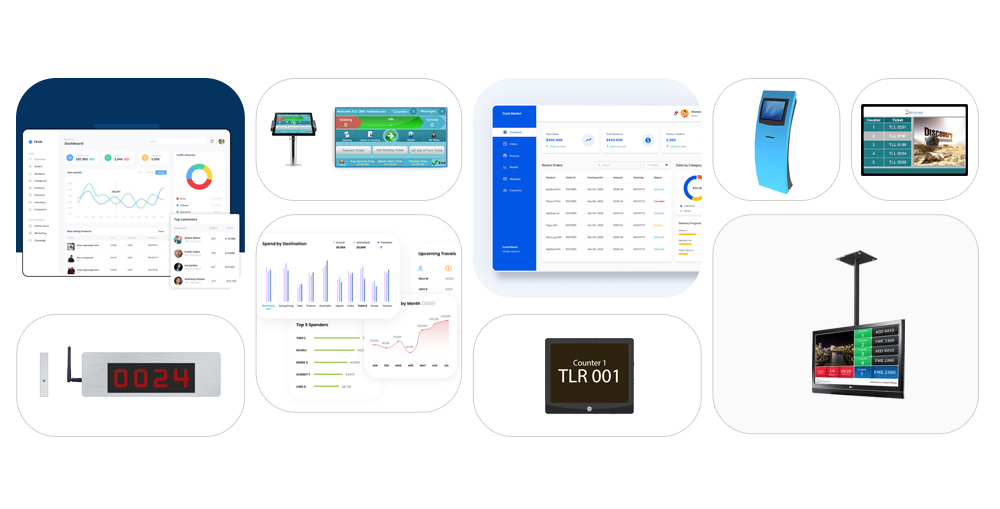
How to Implement a Modern Queue Management System?
A modern queue management system is a very sophisticated and complex tool. It doesn’t mean it is difficult to operate, in fact it is a very user-friendly tools and businesses can also customize the UI/UX to make it more intuitive for customers and staff. However, implementing a modern queue management system requires careful planning and strategic project execution.
Here is a step-by-step guide to implement a modern queue management system:
- Requirement Gathering: It is important to clarify your requirements before selecting a queue management system. A through assessment of your business needs, customer flow and existing problems has to be conducted and a requirement document should be prepared at this stage.
- Vendor Selection: Selecting a right vendor is the most crucial part. You should search reputed queue management system providers in Dubai, Sharjah, Abu Dhabi or anywhere in UAE. Make sure they are offering, virtual queuing, system integration, customized reporting, interactive self-service solutions and other required features and chose the vendor with best price and portfolio.
- System Commissioning: Commissioning the queue management system includes, system deployment at your premises and integration with required systems and existing IT infrastructure. This could involve multiple vendors or teams hence require close collaboration and intensive management to overcome technical challenges and obstacles.
- Staff Training: Once the queue management system is commissioned, now is the time to train your staff. You can held comprehensive training workshops and provide relevant manuals to make your staff familiar with the operation and useful features of the system.
- Testing and Optimization: Once the queue management system is fully operational it is time to closely monitor the system performance and its impact on both customers and the staff. You can collect feedback and suggestions from customers, service staff, other system users and stakeholders. Based on these feedbacks modifications can be done to make your queue management system more effective and impactful.
If you follow the above steps you can successfully implement a modern queue management system.
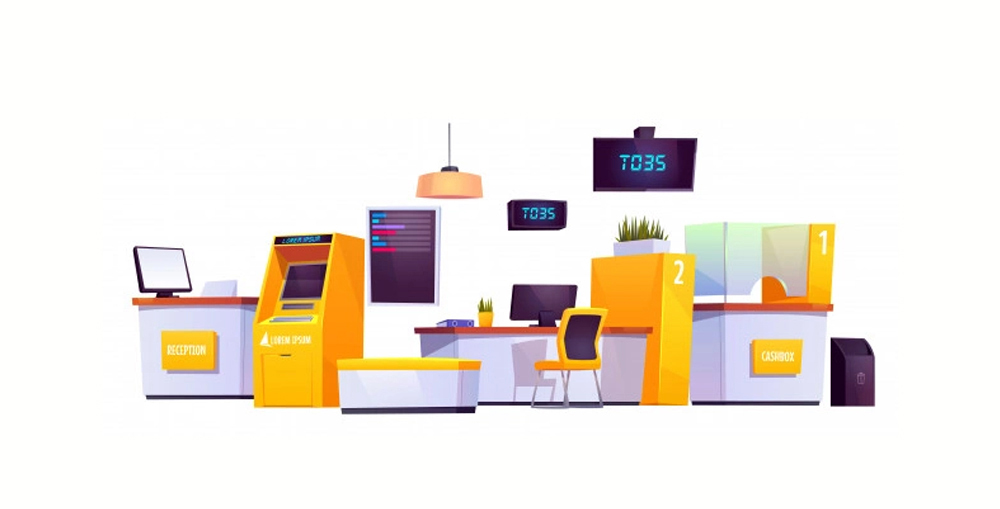
How Modern Queue Management System is Impacting Businesses: Case Studies
Different industries are implementing modern queue management systems to achieve their goals. Different industry sectors have slightly different requirements hence most of the time businesses prefer to customize the queue management system as per their specific needs.
Here is a quick overview of how modern queue management systems are impacting businesses in different industries:
- Retail Sector: The retail sector in UAE is adopting to modern queue management system and according to market studies a retail business can have up to 30% reduction in average customer wait time, which results in up to 20% higher customer satisfaction and almost 15% better staff performance.
- Healthcare: The healthcare sector is one of the most sensitive sector where the patient wait time could have most impact on both business/clinic/hospital and the patient. Healthcare sector is witnessing almost 40% reduction in average patient wait time and great improvement in staff performance and resource management.
- Banking Sector: The market studies are showing that the banks all over the UAE are witnessing great improvements in customer experience and wait time after implementing a modern queue management system. The virtual queuing can reduce the wait time by 50% and help enhancing the staff performance by up to 30%.
- Government Sector: The government offices, service centers and other government organizations can greatly reduce customer wait time. According to market research an average government service center can reduce customer wait time by up to 60% by implementing a modern queue management system.
- Part and Entertainment: The theme parks and entertainment sector can greatly optimize customer wait time by implementing a modern queue management system which can reduce average wait time to up to 40% and help enhancing customer experience and raise satisfaction.
Different industry sectors are using queue management systems differently, based on their industry specific needs and other factors. Apart from that businesses who are implementing a custom queue management system are witnessing even more positive impact of it.

Conclusion
A modern queue management system is not just having a bunch of technologically advanced features, in fact it is a complete framework to systematically manage and improve customers’ service center experience while maintaining optimum performance and operational efficiency. This means that when a business implements a modern queue management system, it not only elevate customer experience, but at the same time it also optimize efficiency and productivity, which means a significant increase in profitability and growth.
Businesses can gain a great competitive advantage by achieving and exceeding the industry benchmarks. Delivering a great customer experience and higher service quality ensures higher customer loyalty and help businesses achieve their goals. A modern queue management system is a very cost-effective tool with requiring very little to no maintenance and can stay relevant for years which can greatly improve the ROI.
In this blog we have discussed what a modern queue management system is and how businesses can leverage it to achieve higher customer satisfaction and better operational performance and strength. If you want to learn more about the modern queue management systems or if you want our help to implement a tailor-made queue management system in your business, please feel free to contact us through our Contact Us page or leave a comment in the comment box below and we will get in touch with you soon.
Frequently Asked Questions (FAQs)
- Q: What are the Key Components of a Modern Queue Management System?
A: A modern queue management system components include a server side software application, different user interfaces for service agents, higher management and the customers. An interactive self-service ticket dispensing kiosk with intuitive multi-lingual UIs helps customer to sign-up. Counter displays and audio announcement system along with a digital signage to display queuing information are also common.
- Q: How Virtual Queuing Works?
A: A virtual queuing is a set of advanced and integrated features which allow customers to sign-up remote without being physically present in the premises or without requiring them to wait in physical waiting lines. Customers can use QR Code, Online Portal, Mobile Apps, WhatsApp, SMS or any other channel to sign-up for virtual queues.
- Q: What analytical data a Modern Queue Management System Collects?
A: A modern queue management system can provide a wealth of business intelligence and analytical data which includes, customer behavior, customer interaction at different touch points, customer flow stats, peak-hours insight, staff performance data and much more. It helps businesses taking data-driven decisions to make improvements in their service centers.
- Q: What is Third-party System Integration?
A: The third-party system integration is a process of connecting to independent system and enabling a communication channel between them. It can be used to provide access to data from a system and it can also be used to synchronize the data between two systems to prevent manual data updates and duplications. It make systems more dynamic, innovative and effective. The third-party system integration is done via secure web services or APIs.
- Q: Can a Queue Management System work for a Multi-branch Business?
A: Yes. A modern queue management system can effectively manage multiple branches. Typically a queue management system has a server-side application which his hosted on a server and that server is linked to all hardware devices across all branches and the users can access respective user dashboards from all branches while the head office or main branch can monitor and manage the entire system and get reports and data from all branches in real-time.
- Q: What is the Role of Real-time Reporting in Queue Management System?
A: A modern queue management system offers real-time reporting. It enables businesses and all system users to get real-time and up-to-date data in their respective dashboards and it also allow businesses to set alerts and trigger for any change in customer flow, wait time, or service performance. The real-time reporting allow management to take instant decisions, prevent congestion and help them effectively manage resources.
- Q: Can We Customize a Modern Queue Management to Accommodate our Unique Business Needs?
A: Yes, a modern queue management system is built on very flexible and advanced technology platforms which support customization and help businesses build a tailor-made queue management system to accommodate their unique business needs. It can also be customized to overcome integration challenges. The user interfaces and user experience can also be customized as per business needs.
- Can a Modern Queue Management System Send Alerts and Notifications to Customers?
A: Yes. A modern queue management system comes with in-built alerts and notification module which allow businesses to set triggers, and accommodate customized workflows for automated alerts and notifications. Alerts and notifications can be sent using SMS, Email, WhatsApp, In-App Notifications, and any other integrated communication channel to provide them information about their ticket status, queuing information and any change in customer flow.
- How a Modern Queue Management System Handles Peak-Hours and Unexpected Surge in Footfall?
A: A modern queue management system is built around a powerful smart software and AI (Artificial Intelligence) technology. The smart algorithms can monitor customer flow in real-time and they can also analyze the historical data along with predictive queuing algorithms which can automatically reroute customers to less-busy counters, and can also effectively manage resources to accommodate peak-hours or unexpected surge in footfall. Furthermore the modern queue management system can also alert branch manager or head-office with adequate information to help them take instant decisions to prevent crowd formation and congestions.
- Does Queue Management System comes with Security Measures to Protect User Data?
A: Yes, a queue management system comes with in-built security measures to ensure highest level of user data protection. The in-built data encryption and secure network communication help protecting user data. A user management module allow implementing customizable user access and authentication mechanisms to prevent unauthorized access to user data stored in the system. Typically a queue management system doesn’t store much of customers’ personal information within the system, it is usually accessed from the main customer database or central information system. Even if any such data is stored, it is hosted on secure server or cloud to ensure highest level of security and data protection.
